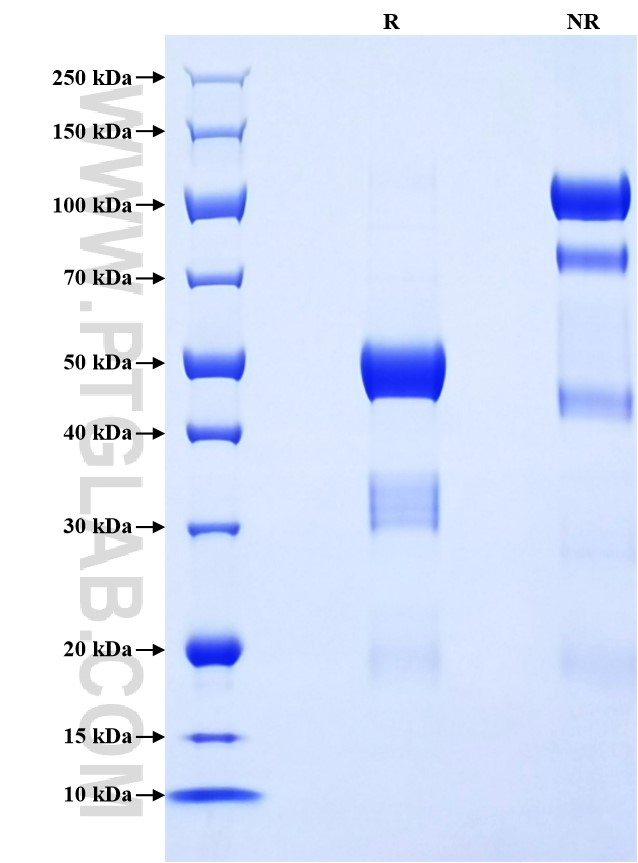Recombinant Pig IFN-gamma protein (rFc Tag)
种属
Pig
纯度
>90 %, SDS-PAGE
标签
rFc Tag
生物活性
未测试
验证数据展示
产品信息
| 纯度 | >90 %, SDS-PAGE |
| 内毒素 | <0.1 EU/μg protein, LAL method |
| 生物活性 |
Not tested |
| 来源 | HEK293-derived Pig IFN-gamma protein Gln24-Lys166 (Accession# P17803) with a rabbit IgG Fc tag at the C-terminus. |
| 基因ID | 396991 |
| 蛋白编号 | P17803 |
| 预测分子量 | 43.1 kDa |
| SDS-PAGE | 20 kDa, 30-35 kDa and 45-52 kDa, reducing (R) conditions |
| 组分 | Lyophilized from 0.22 μm filtered solution in PBS, pH 7.4. Normally 5% trehalose and 5% mannitol are added as protectants before lyophilization. |
| 复溶 | Briefly centrifuge the tube before opening. Reconstitute at 0.1-0.5 mg/mL in sterile water. |
| 储存条件 |
It is recommended that the protein be aliquoted for optimal storage. Avoid repeated freeze-thaw cycles.
|
| 运输条件 | The product is shipped at ambient temperature. Upon receipt, store it immediately at the recommended temperature. |
背景信息
Interferon gamma (IFN γ) is a type II interferon that confers immunity to bacterial, viral and protozoan infections. In its active form, IFN γ is a glycosylated, non-covalently linked homodimer of 29-32 kDa subunits. It is produced by a number of immune cell types, including natural killer cells, natural killer T cells and effector lymphocyte T cells, in response to antigenic and inflammatory stimuli. The IFN-γ dimer binds to its cognate receptor, which has two subunits: IFN-γR1, the ligand binding chain (α chain), and IFN-γR2, the signal transducing chain (β chain). Binding to the receptor activates the JAK/STAT pathway, which in turn activates IFN-γ responsive genes. While IFN γ can inhibit viral replication, it also acts as an immunomodulator and immunostimulator by increasing the surface expression of class I MHC proteins.
参考文献:
1.Billiau A. et al. (2009) Cytokine Growth Factor Rev. 20(2):97-113. 2.Tau G. et al. (1999) Allergy. 54(12):1233-51. 3.Ding H. et al. (2022) Biomed Pharmacother. 155:113683. 4.Cordeiro PAS. et al. (2022) Rev Inst Med Trop Sao Paulo. 64:e64.
